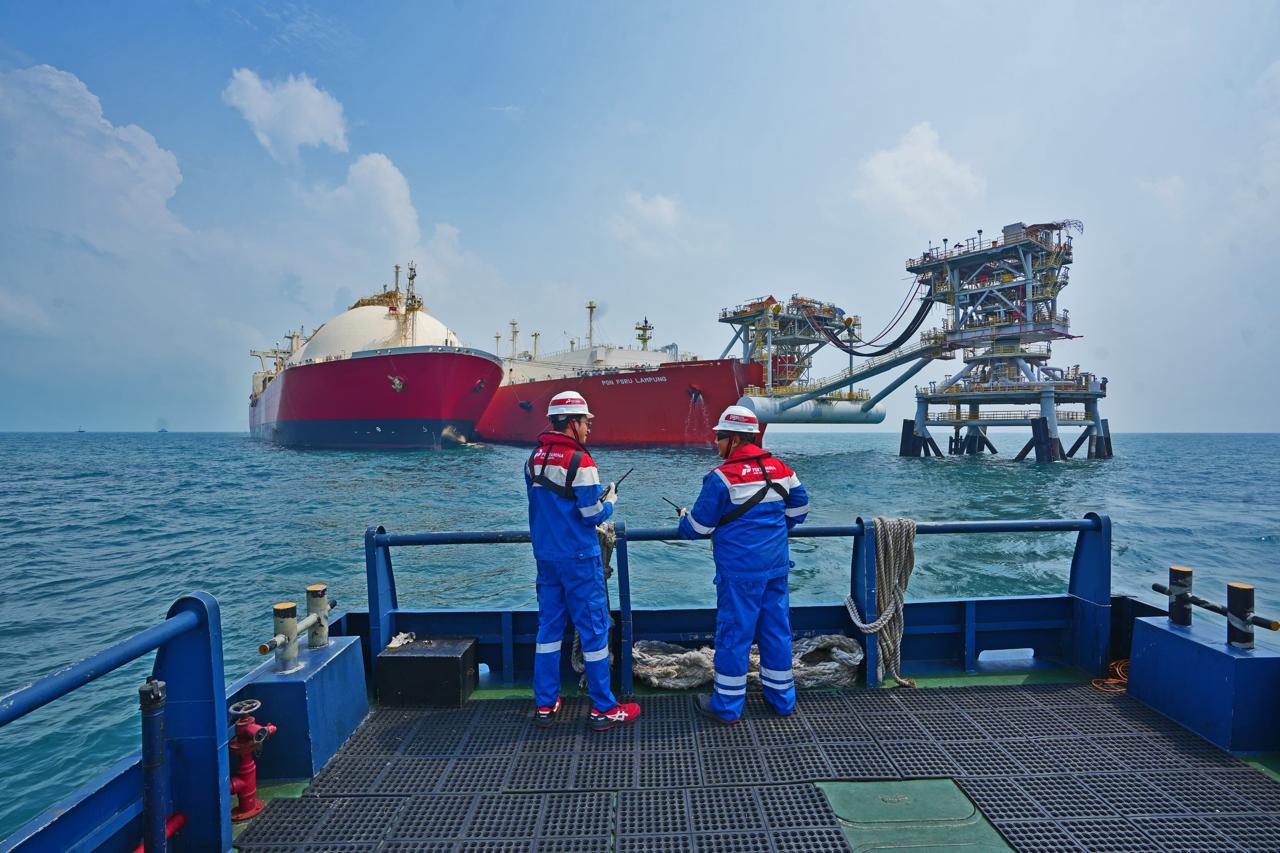Kembali Ke Beranda
25 Nov 2024
Supporting Transitional Energy, PGN Optimizes Domestic LNG Utilization
Jakarta – As Pertamina's Gas Subholding, PT PGN Tbk continues to strive to fulfill the supply of natural gas according to the needs of all customers. In line with energy consumption which is still supported by natural gas in the transition period towards the use of New Renewable Energy (EBT) and supports the NZE 2060 target. Energy consumption during the transition period is also accompanied by the utilization of natural gas sourced from Liquefied Natural Gas (LNG).
The peak of natural gas utilization in developing countries including Indonesia is estimated to occur in the 2040s. Most of it will be met through LNG. In addition, gas production has also increased in accordance with the discovery of the majority of gas projects in Indonesia.
"The growth in natural gas utilization will be supported by the optimization of gas supply both directly from production wells and through LNG modes in order to increase the availability of natural gas," said PGN Commercial Director Ratih Esti Prihatini, (11/25/2024).
The trend of natural gas utilization for export has decreased since 2012 based on data from the Ministry of Energy and Mineral Resources. Meanwhile, in mid-2024, approximately 60% of gas is utilized domestically. The largest need is in the industrial sector with an average gas usage of 1,592 BBTUD in the 2020-2024 period. On the other hand, electricity needs have also been diverted to fulfilling gas using LNG.
PGN as a national natural gas utilization business entity in Indonesia, plays a role in this condition, especially in providing LNG for domestic needs. The provision of LNG is also part of PGN's adaptation efforts to the dynamics of the business environment that have occurred in recent years.
Ratih said that the use of domestic LNG is both an opportunity and a challenge for PGN. How can PGN take advantage of this opportunity to deal with the natural decline of existing pipeline gas. This situation requires support from a reliable new supply. Then it becomes a challenge for PGN to be able to provide LNG and achieve the potential for a large domestic LNG supply, such as from Bontang, Tangguh and Donggi-Senoro.
"Then there is also the potential of the Andaman Field. This is interesting, because the location is close to the Arun LNG Facility which we will use for LNG regasification," said Ratih.
Currently, PGN is optimizing the utilization of LNG facilities in the Lampung FSRU and West Java FSRU. For information, PGN's LNG needs in 2025, especially for West Java, are approximately 22 - 25 LNG cargoes (1 cargo is approximately equivalent to 8 - 10 BBTUD). The supply of gas from LNG regasification is also needed as a balancer for the decline in the existing pipeline gas supply, either due to disruptions to gas wells or planned maintenance carried out by gas suppliers.
In the utilization of LNG, there are also a number of things to pay attention to. One of them is the price of LNG. The domestic LNG purchase price refers to the realization of the domestic production oil price or Indonesia Crude Price (ICP) which is set by the Minister of Energy and Mineral Resources every month. However, historically, the domestic LNG purchase price tends to be stable, when compared to JKM as a reference for the Asian LNG market price.
"PGN is committed to meeting domestic natural gas needs in the long term. We utilize uncommitted domestic LNG cargo, optimize LNG regasification facilities to reduce the existing supply deficit, and establish long-term cooperation with domestic LNG providers to maintain the continuity of natural gas. We also synergize with the government, natural gas users and other stakeholders in order to create policies that encourage an adaptive natural gas market," Ratih concluded.
Kembali Ke Beranda











